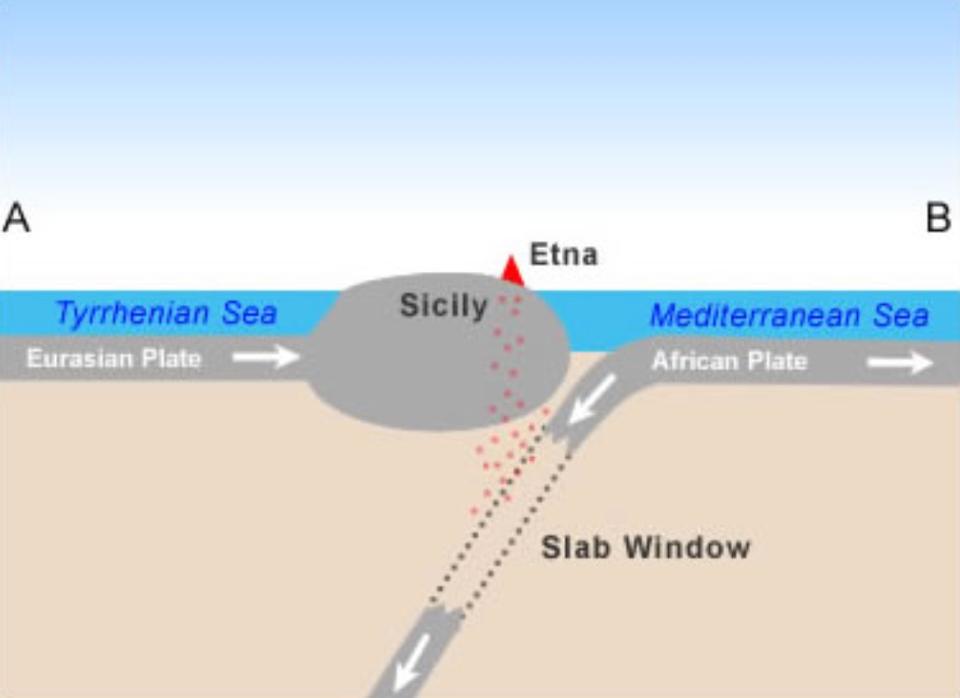
After a relatively calm 2016, Europe’s most active volcano — Mount Etna in Sicily, Italy — came to life on February 27. The eruption that occurred at about 6:00 pm local time from the relatively new Southeast Crater formed by a 1978 eruption lit up the dark Sicilian skies with fountains of bright orange lava. As is characteristic of all Mount Etna ejections, the lava stream was accompanied by Strombolian eruptions. The brief, explosive outbursts that are caused by trapped bubbles of gas escaping through the lava can reach heights of several hundred meters, making for a spectacular show.
The natural display of fireworks that subsided by the following day was intermittently seen again as late as March 4. A 2012 study found that Mount Etna’s frequent, albeit brief, violent outbursts, called paroxysms, spew out enough lava every year to fill Chicago’s 1,450-foot-tall Willis Tower. Fortunately, the lava or ash from the most recent eruption did not cause any damage or even disrupt air traffic in the nearby town of Catania.

However, while this lava explosion was benign, the 10,900-feet tall mountain which boasts a longer written record of eruptions than any other volcano, has not always been this considerate of its neighbors. Roman records from 122 B.C. indicate that a massive explosion not only obscured the sun for several days, but also caused extensive damage to the town of Catania, which took ten years to rebuild. While there have been several more incidents reported since the most destructive eruption occurred in 1669, when an earthquake that originated beneath Mount Etna killed 1,500 residents in the nearby town of Nicoli.
More recently, in 1992, the city of Zafferana Etnea was in the direct path of Mount Etna’s lava flow. However, massive concrete blocks dropped in front of the lava tunnel slowed down its progress and gave locals enough time to dig an alternate channel and divert the lava away. Though a few homes, orchards, and vineyards did get buried, there was no loss of life. But it is not all bad. The constant activity has also resulted in ash-enriched soil that is ideal for growing olives and grapes, making Sicily home to some of the world’s best olive oil and wine.

Scientists suspect that Mount Etna’s constant activity may be the result of its location along a subduction zone – the place where one of the Earth’s plates moves below another. In this instance, it is where the African tectonic plate is being pushed under the Eurasian plate. As the African plate falls into the Earth’s mantle, it melts. This causes the magma, the molten rock, and gas from Earth’s mantle layer to be sucked into the space left behind by the melting plate and erupt at the surface as lava and ash.
Mount Etna is associated with numerous myths. According to one legend, it was home to Hephaestus, the god of fire and metalwork, who forged the armor and weapons for Athena, the goddess of war, and also crafted beautiful jewelry gifted to both humans and gods. Another myth associates the mountain’s violent activity to Typhon, the god of storm winds who terrorized the Greek gods. According to the legend, Lord Zeus was finally able to stop him by burying him under the island of Sicily. Given the rich history, it is no wonder that despite the danger it poses, locals are very fond of this highly volatile volcano they call “Mongibello,” or the beautiful mountain.
Resources: National Geographic.com, livescience.com, wired.com